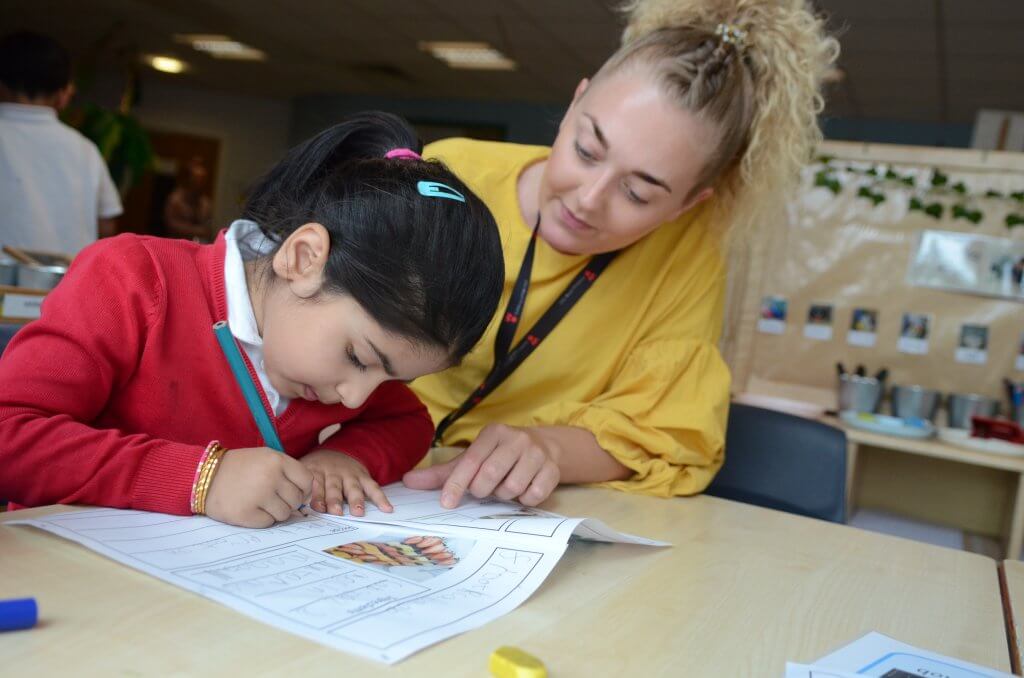As key workers, many school staff may be required to work as usual during current Coronavirus pandemic. However, the Government’s social distancing policy makes it clear that staff should work at home wherever possible. This has immediately changed the way we work for the foreseeable future, and possibly in the longer term.
Whilst there are many benefits to be gained from such agile working arrangements, it presents a number of challenges that need to be carefully considered and managed. These include staff wellbeing, health and safety, data protection and how you conduct your normal management practices. Here, we briefly outline steps you can take to proactively support your staff during this challenging period.
Staff wellbeing when working from home
Home-working is not a new concept in the education sector. Teachers in primary and secondary schools report that over a fifth of their hours are done outside of school on evenings and weekends during term time, that is without counting hours worked during school holidays.
Statistics from the Office of National Statistics about the impact of coronavirus on society, shows notably that wellbeing is the biggest of all concerns during the pandemic, outstripping many other key issues including health, finances and relationships. The million-dollar question now is how do we focus on supporting employee wellbeing when we are faced with ‘unprecedented times’.
The first step for schools is to identify through what means you can measure the effectiveness of your revised wellbeing strategy. Staff satisfaction seems to be a pertinent measure, and Survey Monkey have put together a series of coronavirus wellbeing survey templates, which focus on key issues affecting staff such as their personal levels of anxiety, their ability to cope with homeworking and views on communication. A less formal approach to measure effectiveness would be simply to contact employees by telephone for a wellbeing discussion and obtain their views on how well supported they feel.
Health & Safety
As an employer you have the same health and safety responsibilities for home workers as for any other workers. Employees also have an obligation to take care of themselves, and co-operate with employers in meeting their legal obligations.
For all employees working from home, typical risks to assess and consider appropriate control measures for include:
- The importance of maintaining a good home-work balance, health, and wellbeing
- Using electrical equipment safely including display screen equipment (DSE)
- Appropriateness of home office area, promoting comfort and good posture to avoid problems such as bad backs
- Avoiding slips, trips and falls
- Fire safety awareness
- Home security
- Work confidentiality
- First aid
- Personal safety
Currently it is not feasible to carry out a normal health and safety risk assessment at an employee’s home. As an alternative, this could be undertaken remotely by asking employees whether they feel the work they are being asked to do can be done safely and that they have the right equipment to do so.
Use of a self-assessment questionnaire covering the main risk areas identified above can then form the basis of a subsequent discussion. With their agreement you could also use video conferencing to help assess their working environment. The HSE website has a template self DSE assessment tool HSE DSE questionnaire.
Wellbeing of Leaders
Finally, school leaders must make sure that they take care of themselves and role model how you are supporting your own wellbeing, being kind to yourself as well as others. Ensure regular contact with your Chair of Governors to discuss your wellbeing and other school issues. In times like this famous quotes seem appropriate as they often carry much truth, and so to quote John Steinbeck ‘Now that you don’t have to be perfect, you can be good’. Below are our top-tips to support the wellbeing of employees.
Top Tips for Managers supporting staff remotely:
Expectations It is important for senior leaders to be clear about their expectations of home working arrangements from the outset. This would include working hours, work to be completed, and expectations about communication. Honesty and clarity are key to ensuring staff feel supported, and that they have a good understanding of what is required over the coming working weeks.
Communication Communication is key during this uncertain period, and for any future homeworking arrangements. Most school staff are not familiar with regular home working and as such are more likely to feel isolated or removed from their colleagues. Managers can help alleviate these feelings by making regular contact over the phone, as well as setting clear expectations for group working, staff meetings, sharing resources, etc. Some schools have a ‘wellbeing buddy’ systems set up which have really brought the team together.There is a lot of new software available which can make it much easier to connect a group of colleagues, for example Zoom or Google Teams. These can help ensure staff stay connected to lots of colleagues, and encourage collaborative working.
Focus on Wellbeing The brand-new ways of working during these unprecedented times are going to impact staff in various different ways. The best way to ensure your staff are coping and feel supported is to reach out to them and encourage open and honest conversations. Welfare calls separate from any conversation about work need only last a few minutes, but are a great way of maintaining the normal ‘office chat’ and social connection that staff may otherwise really come to miss. Signposting staff to fun and engaging health and wellbeing websites and initiatives is a great quick win. Your wellbeing team could devise a ‘wellbeing’ virtual pack which may include; Yoga or exercise You Tube clips; nutritious recipes; mediation apps; confidential counselling phone numbers and contacts and in one school they even did a weekly step challenge for staff to take part in.
Appropriate Monitoring Each school leader will determine how much or little monitoring is required of staff while they work from home. Some will set tasks to be completed over the period of a week or two weeks, and check in on staff once or twice during this period. Others will require their staff to report back much more regularly on work that has been completed, for example if they are hosting virtual lessons for pupils, or providing daily resources. Leaders can support their staff with this new form of management by continuing to focus on wellbeing, set clear expectations, and communicate these effectively. Giving your team a clear indication of how often you will be monitoring them at home, and an example of what you’ll cover, will always make staff feel more comfortable. If you feel that it is difficult to manage staff appropriately through emails and phone calls, you could consider agreeing to video calls. Don’t forget to provide clear messages regarding how Performance Management will be reviewed this year given the disruptions – another blog on this issue coming soon!
Keeping the Team Spirit It is one of the sad facts about this pandemic that the distance from colleagues will feel isolating, and even the most ‘tech-savvy’ amongst us cannot replicate the team spirit we feel in the school setting via remote platforms. School leaders and managers are responsible for ensuring their staff are safe, well, and confident working from home, but they also are responsible for ensuring the momentum isn’t dropped along the way. Leaders can be creative with this and think about how your team normally comes together. Is it in the pub on a Friday after work? Coffee before school on a Monday morning? Or do you feel the best team spirit in your weekly team meetings? We have lots of mediums for group communication, as discussed above, and any of these can be utilised to bring your team together. Why not try a quiz, or ask your team to share moments from their day / week with the wider team?
CPD If CPD can be done remotely, this is something which can boost staff wellbeing. Share key documents with staff to refresh their understanding, there are also many online training packages with little cost attached to them staff could connect with.
There will be unique challenges that face each school leader, and the HR Helpdesk is here to support as much as possible during this extraordinary time, please get in touch at hrpeople@oneeducation.co.uk for further support and top tips.













